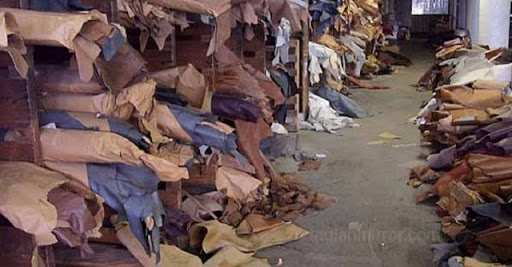Leather cluster embarks on shoe production training
THE Bulawayo Leather Cluster has embarked on a shoe production training programme targeting 20 youths from Umguza District as part of economically empowering them, an official has said.
This comes at a time when the Bulawayo Leather Cluster is scaling up the production of a high-quality and exclusive range of shoes to consolidate local market supplies, as well as boost exports to neighbouring countries.
As part of scaling up production, 15 girls and five boys have been given an opportunity to learn about shoe production.
Bulawayo Leather Cluster secretary, Mr Fungai Zvinondiramba said this will go a long way in empowering and changing the lives of youths.
“We are training them to make school shoes, sandals and belts and after that, we are expecting them to go to Umguza and establish a small factory. They have got the equipment, which was given to the Umguza district by the African Project,” he said.
Mr Zvinondiramba said the youths will go with the equipment back to the district where they are going to start their own production of shoes.
He said they are working in partnership with SOS, the Ministry of women affairs, community, small and medium enterprises development and the Ministry of Youth, Sport and Recreation.
“At the end of this training, each one of these students must move out of this place with at least 20 pairs of school shoes and that becomes their startup kit. When they sell the pairs, they would then start to do continuous production of school shoes,” said Mr Zvinondiramba.
Harnessing leather sector opportunities is regarded as low-hanging fruit for Zimbabwe given the country’s comparative advantage in livestock and crop production, which provides major raw materials, and its impact on downstream industries.
Mr Zvinondiramba said they intend to do the project throughout the year, targeting the youth. He said the partnerships with the Ministries of Youth, Sport and Recreation and Women’s Affairs, Community, Small and Medium Enterprises Development are going to help in seeing the project working to its full potential.
The Bulawayo Leather Cluster is also targeting regional markets. They have laid structures to approach Namibia, Zambia, and Botswana, and there is a possibility of going beyond those markets as they are also strengthening collaborations in product development and branding with other stakeholders.
One of the students, Bibiana Nakah (21) from Umguza Ward 2 said she is part of the project because she wants to gain as much knowledge as possible on shoe production so that she can be able to start her own company upon completing the training.
Another youth from Ward 2, Simphiwe Sibanda (18) said this is an opportunity that will capacitate her with knowledge for her to be economically empowered.
“This leather cluster training is going to allow me to gain knowledge on shoe production. I want to have my own company, and that would allow me to give back to the community by helping people, especially the disabled,” she said.
Meanwhile, at its prime in the 1990s, the leather sector produced up to eight million pairs of shoes before most established manufacturing firms folded due to the harsh economic environment.
However, with the Government interventions that include the launch of the Zimbabwe Leather Sector Strategy (2021-2030) by Vice-President Constantino Chiwenga in April 2021 to anchor increased investments and maximising value-addition and beneficiation to promote export-led industrialisation, the sector is now on a recovery path.
Vice-President Constantino Chiwenga
Cabinet approved the Zimbabwe Leather Sector Strategy in November 2020 as part of measures to position the sector for increased domestic value addition and beneficiation so as to promote export-led industrialisation.
The move buttresses comprehensive sectoral transformation ambition towards high value addition under the National Development Strategy (NDS1 2021-2025), a five-year blueprint that builds towards the broader upper middle-income vision by 2030.
The Government is also hopeful that guided by the new strategy, the leather sector would increasingly lobby for the development and reform of 70 percent of the identified policies and legal frameworks for the transformation of the sector by 2030.-chronicle.co.zw











